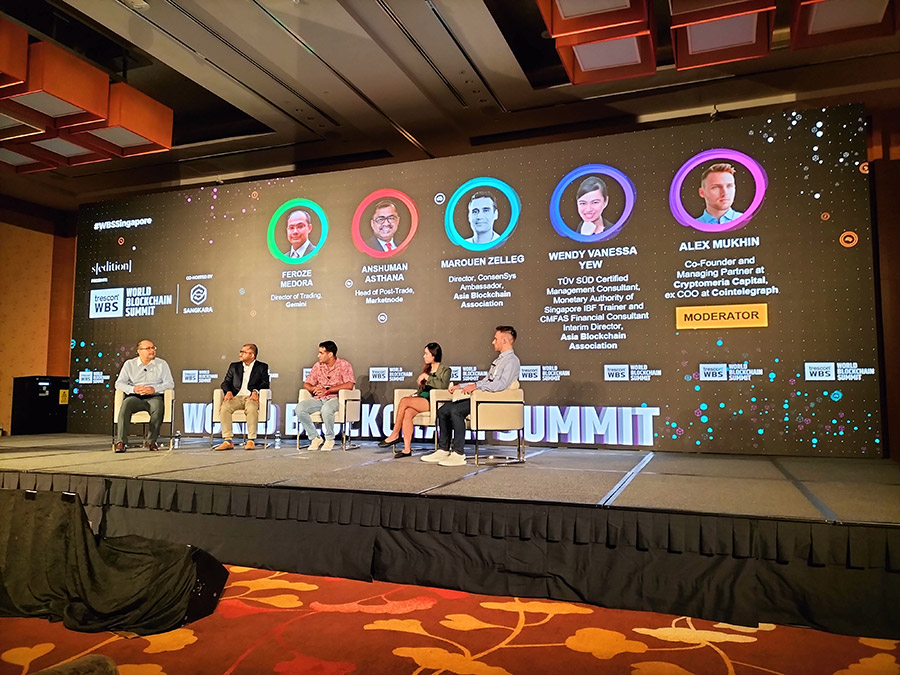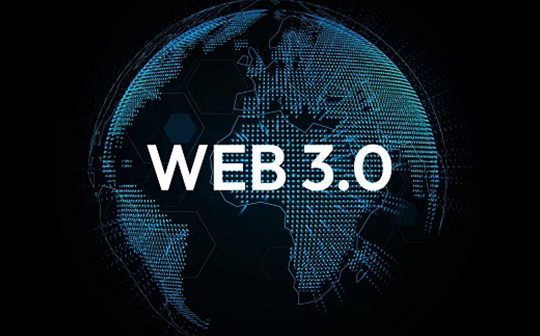
Insights from the 2022 Global Web3 Eco Innovation Summit Singapore (GWEI 2022) and World Blockchain Summit.
Web3.0, since being famously coined by the Ethereum co-founder Gavin Wood in 2014, has been inevitably associated by some with cryptocurrencies.
Web3.0, as these views offer, will see the likes of Bitcoin and Ethereum become prevalent in the universe of payment means.
Such a development, many postulate, is but a natural next stage in the internet evolution.
If the genesis of the internet Web1.0 is “read-only”, and today’s Web2.0 is “read/write”, Web3.0 is the future world of “read/write and own”. For example, we will own our Fitbit digital health data which can be tokenised to act as a medium of exchange for other services. Further, these tokens and others (such as non-fungible tokens (NFTs), gaming’s “play-to-earn” tokens) will enjoy widespread acceptance as they gain legal status as an asset class, and join the mainstream cryptocurrencies in catalysing the burgeoning virtual content economy.
For others, Web3.0 is about harnessing the blockchain technology underpinning cryptocurrencies to transform our economic and social processes.
And yet, there are those for whom Web3.0 is simply synonymous with the metaverse world for immersive experiences.
Clearly, the varying perspectives of what Web3.0 represents reflect the thriving ecosystem of start-ups, investors, academia, policy makers and users.
To help unpack this rapidly evolving world of Web3.0 were two global events hosted in Singapore – the 2022 Global Web3 Eco Innovation Summit Singapore (GWEI 2022) [1], and the World Blockchain Summit 2022 (WBS 2022) [2].
Over two days, some of the world’s most influential Web3.0 and blockchain technological experts, scholars, government officials and enterprise executives gathered to exchange and debate the opportunities, the risks and the way ahead.

Here are some highlights.
WEB3.0 AND DECENTRALISATION
While there are many perspectives of what Web3.0 entails, the discussions suggested there was a clear consensus on what set Web3.0 apart from today’s internet.
It is the promise of drastically transforming economic and social dynamics through “decentralisation” – a term with many flavours.
Many commonly refer to decentralisation as the disintermediation of a centralised party. For example, as per Ethereum.org: “DeFi (decentralised finance) uses cryptocurrencies and smart contracts to provide services that don’t need intermediaries.” [3] This peer-to-peer provision of financial services can transform today’s financial world where banks often act as lenders or middlemen.
Decentralisation can also be seen as a distribution of trust from a third party to the individual(s).
For instance, Sopnendu Mohanty (Chief FinTech Officer, MAS) at the GWEI 2022 Fireside Chat with Prof. David Lee (Professor of SUSS, Chairman of Global Fintech Institute), noted that “in Web3.0, the future desire is to transfer and decentralise economic opportunity to everyone who participates in the economic activity. So trust has to come in a distributed way.”
This contrasts today where “traditionally, most of governance and trust is somehow outsourced to a third party. Somebody else is monitoring the behaviour between you and me. Somebody else is ensuring that the money that is sent to you is checked,“ he explained.
Another view of decentralisation is offered by Chua Tju Liang (General Counsel, Ethereum Foundation) who shared his personal insights at the GWEI 2022 panel “Central Bank Digital Currency and Cryptocurrency”.
He “would define it as a shift of control and decision making from a centralised entity to a distributed group of unique individuals.“
At the same time, the discussions revealed a growing acceptance that “centralised” or “decentralised” are not mutually exclusive, nor are they the only two states for describing a service or a solution in Web3.0.
Rather, between the two is a spectrum representing varying combinations of both. An example given at the GWEI 2022 panel “Web3 and the Convergence of Technologies” is a service built on a blockchain that may use centralised cloud hosting for file storage.
Another example, “CeDeFi” (short for centralized DeFi), was highlighted at WBS 2022.
As the term implies, “CeDeFi” combines aspects of traditional (centralised) finance and DeFi (decentralised finance). The premise is to retain the best of decentralisation while remaining accessible to centralised parties. One example is where traditional centralised organisations use Smart Contracts to build financial products to trade on a DeFi platform.
OPPORTUNITIES
While Web3.0 and decentralisation have many nuances, there is no doubt that the new era they represent offers opportunities to leverage different technologies.
As Professor Cheong Hee Kiat (President, SUSS) pointed out at his GWEI 2022’s opening speech, “we are talking about a multitude of players and vast amounts of new technology and applications and opportunities”.
It “involves the convergence of many technologies,” including “blockchain, the metaverse, cryptocurrencies, NFTs, decentralisated autonomous organisation (“DAO”), AI, Decentralised finance, Cloud computing,“ he adds.
On the other hand, in unlocking economic potential from these technological transformations, he asked “how can we use all of these for good?”
In other words, what are the opportunities to “do good”?
Here, the speakers explored several solutions and services that have created positive impacts on society and environment.
Commonly referred to as financial inclusion, one solution involves making financial services accessible to those excluded from the traditional financial system. An example is DeFi’s peer-to-peer financial solutions made available to those who do not have a bank account – but do have internet connection.
Another is the use of cryptocurrencies for crowd funding – most recently with great success for Ukraine.
Other emerging uses include the gamification of learning – where a user can “learn-to-earn”, unleashing the benefits ranging from increased motivation to enhanced knowledge retention.
RISKS
However, there is a real risk of getting swept up by the exciting technologies without identifying viable market demand.
Some cautioned that not everything needs to be put on the blockchain, or tokenised or decentralised.
For example, at the GWEI 2022 panel “Opportunities & Risks in the Web 3 Era”, Zinan (Investment Director, Kucoin) referred to a computationally intensive activity on AWS such as AI. He challenged us to rethink if “decentralisation is better than centralisation” in this case, and what “added benefits” will decentralisation bring.
Risk discussions also touched on the familiar topics of fraud, money-laundering, privacy and cybersecurity.
Dominating the conversations however was the collapse of the Luna crypto coin (from US$87 on May 5, 2022, to US$0.0005 on May 13 2022) and the reverberations hitting the overall crypto market.
This recent episode rehashes the concerns of financial risk and consumer protection from previous crashes such as the DotCom era of the 2000, the Great Financial Crisis of 2007, and the “ICO” (initial coin offering) bubble of 2018.
So how will this latest crash shape Web3.0 developments? What new regulations will we see? How will the priorities shift? Will there be a crypto winter where investments stagnate? What lessons can be learned?
The speakers shared their take on what the latest event means for Web3.0.
A CRYPTO WINTER?
At the WBS 2022 panel “Fostering the Asian Digital Asset”, Hagen Rooke (Partner, Reed Smith) suggested that we would see practices and regulations ranging from disclosure and collateral to due diligence requirements, in particular for the retail sector.
At another WBS 2022 panel “Digital Assets Sector: What to Watch for in 2022”, Feroze Medora (Director of Trading, Gemini) stressed that “technology does not change risky asset to riskless asset,” and advised consumers to understand “how collateral is managed.” (Indeed, when returns are high, it is sometimes all too easy to dispense with the fundamentals, such as the strength of guarantees supporting the valuation.)
In his firechat with Prof. David Lee, Sopendu Mohanty observed that challenging times showcase those who innovate responsibly, and that “responsible innovators actually find a way to survive such cycles” and “those who overstep find it difficult to survive because that shift has no real economic basis.”
Similarly, John Gu (CEO, AlphaLab Capital), pointed out at the GWEI 2022 panel “Advancing the Development of Web 3”, that crises separate the short-term profiteers from the long-term visionaries.
“When you have bubbles, you have a lot of actors who enter the space who are not true builders, they are there to earn a quick dollar and they do a lot of things that don’t really help to promote the long-term benefits of the space.”
“The people who stay, the people who enter the space during times like these, where the probability of making a quick dollar is lower, are the ones who are really going to shine and build the next wave of innovations in the space,” he added.
Regardless, “bear market or not, innovation does not stop,” said Anshuman Asthana (Head of Post Trade, Market Node) at the WBS 2022 panel “Digital Assets Sector: What to Watch for in 2022”.
In fact, “bear markets are the best times to build projects,” according to Darius Sit (Co-Founder, QCP Capital), speaking at the GWEI 2022 panel “Advancing the Development of Web 3.”
There seemed to be an agreement that the momentum behind Web.30 will continue and be driven by those who want to make a difference. The question that naturally follows is, what is next? What are the challenges, and what are needed to advance the development of Web3.0?
WHAT’S NEXT?
As Professor Cheong Hee Kiat remarked, “the Web3 concept of more linked, more secure, more decentralised and user centric new internet brings endless possibilities”.
However, the discussions pointed to several challenges, hinting that Web3.0 is in the early stages of development to fulfill these goals.
Mass adoption is one challenge. For instance, even Bitcoin at its height with a market capitalisation of ~$1.2 trillion, trails far behind traditional finance, such as US equities trading that commands a market capitalisation of more than $50 trillion.
Scalability is another. A common benchmark is Bitcoin’s ~4 to 7 transactions per second compared to Visa, which processes thousands.
User experience is also far from ideal. For example, the navigation from creating an NFT to finally launching and trading on a NFT platform is not yet as seamless as trading on today’s e-commerce.
To be sure, there are a host of solutions to solve these problems. These include Layer-1 and Layer-2 scaling solutions, Oracles that bridge on-chain and off-chain networks, new consensus algorithms such as Proof-of-Authority or Proof-of-Storage.
Moreover, the recent valuation crash also presents an opportunity for the ecosystem to consolidate with “digital assets providing utility”, according to Marouen Zelleg (Director Consensys), speaking at WBS 2022 panel “Digital Assets Sector: What to Watch for in 2022”. Indeed, the rapid pace of innovation has seen a proliferation of cryptocurrencies – ~20,000 exist today, versus 2,000 during the ICOs heyday. Consolidation of ecosystems and companies can redirect resources towards solving problems that deliver Web3 long-term goals.
In short, there is much yet to be done – the significance of the paradigm shift to Web3.0 cannot be underestimated.
As aptly put by Kanny Lee (MD, Head of Singapore OSL) at GWEI 2022 panel “Web3 and the Convergence of Technologies”, “Banks spent many decades, perhaps the last 80 years convincing people to take money out of mattresses and store in the safety of the vaults. And now, in 2022 onwards, we are convincing people to take it out of the banks and put it onto our digital devices.”
If history is any guidance, there will be many more cycles of rapid growth and consolidations, and market boom-and-bust as we reach for the next generation of internet.
In fact, in the view of Gavin Wood, when building and adopting Web3.0, “as with the development of the internet before it, the timeline could be measured in decades rather than months” [4].
[1] The 2022 Global Web3 Eco Innovation Summit Singapore (GWEI 2022) was held in Singapore on 14th July 2022, and organised by Singapore University of Social Sciences (SUSS), DeFi DAO, and SUSS Node for InclusiveFintech (NFT)
[2] World Blockchain Summit was held in Singapore on 14th – 15th July 2022, and organised by Trescon.
[3] Ethereum.org, Decentralized finance (DeFi), retrieved 18th July 2022, https://ethereum.org/en/defi/
[4] Gavin Wood, Sept 2018, “Why We Need Web 3.0”, https://gavofyork.medium.com/why-we-need-web-3-0-5da4f2bf95ab





